all photos by the author, Elyssa Maxx Goodman
On the morning of July 4, the conductor approves my digital Long Island Rail Road ticket, this ticket that will take me first to Jamaica in Queens and then to Sayville on Long Island. From there, I will transfer to a shuttle bus that will take me to the Sayville Ferry Service, where I will then get on said ferry to Cherry Grove. It’s quite a bit of travel for this Independence Day, a holiday it feels even more suspect to celebrate this year than usual, but for the Invasion of the Pines, it is always worth it.
The Invasion, as it’s known, began in 1976 and celebrated its 50th edition this year. In 1976, beloved drag artist and trans woman Teri Warren was denied service at the Fire Island Pines restaurant The Blue Whale because she was in drag. At that time, the Pines had been known for its high-end, often closeted, clientele. The Blue Whale’s owner, John Whyte, also frowned on both drag and any “flamboyant” displays, barring them from the premises. Fuming after Teri’s mistreatment, on July 4, 1976, Thom Hansen —who also performed in drag as Panzi —and several friends dressed in drag and took a water taxi over to the Pines. They arrived, the boat’s horns blazing, and “blessed” the crowd at the Pines, much to the simultaneous delight of onlookers and the chagrin of the aforementioned hotelier. The tradition carried on for nearly 50 years, with people in drag filling up the ferry (sometimes even more than one) year after year. Whyte and Panzi eventually found harmony, and Whyte became a supporter of the event.
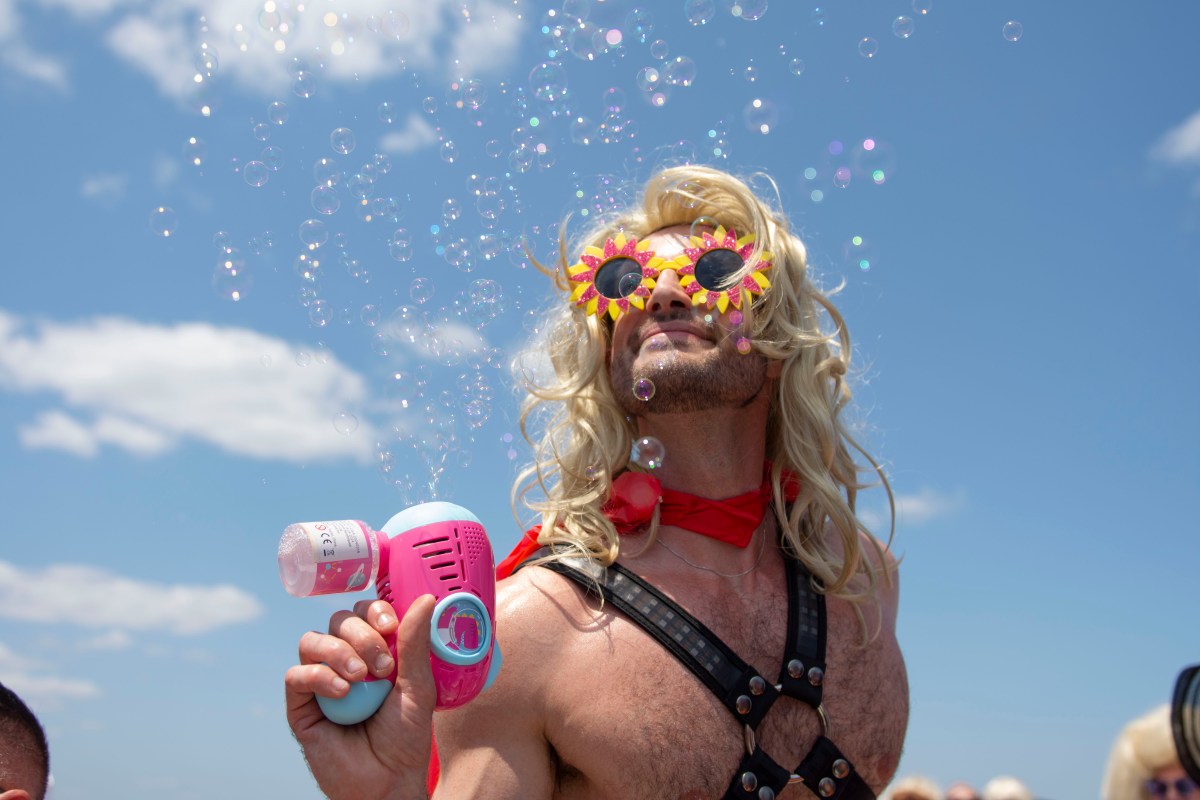
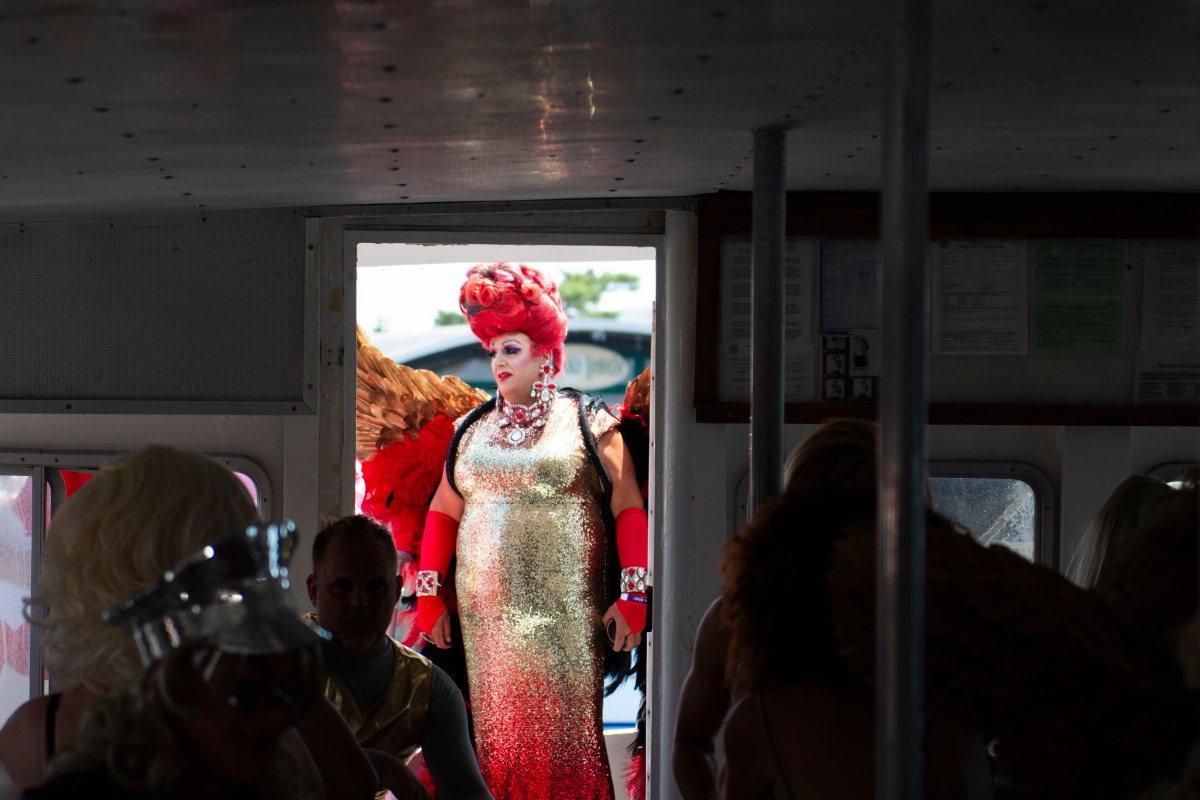

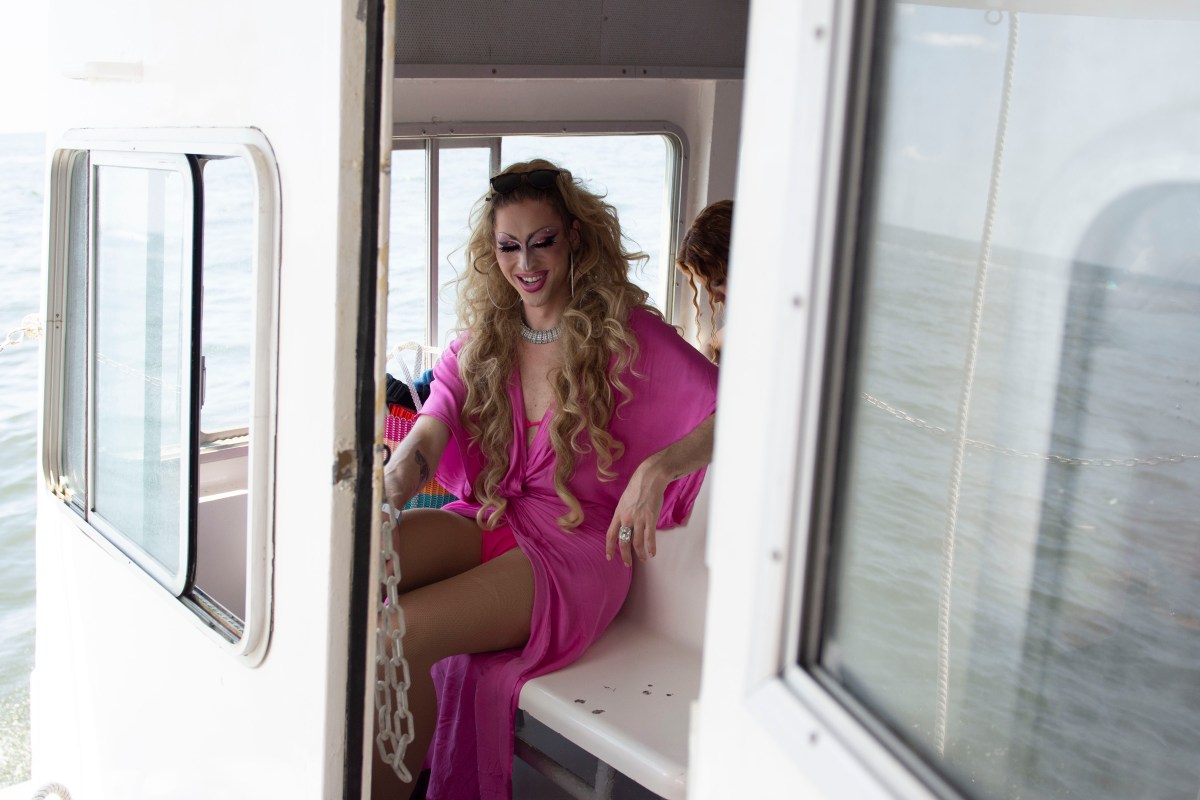
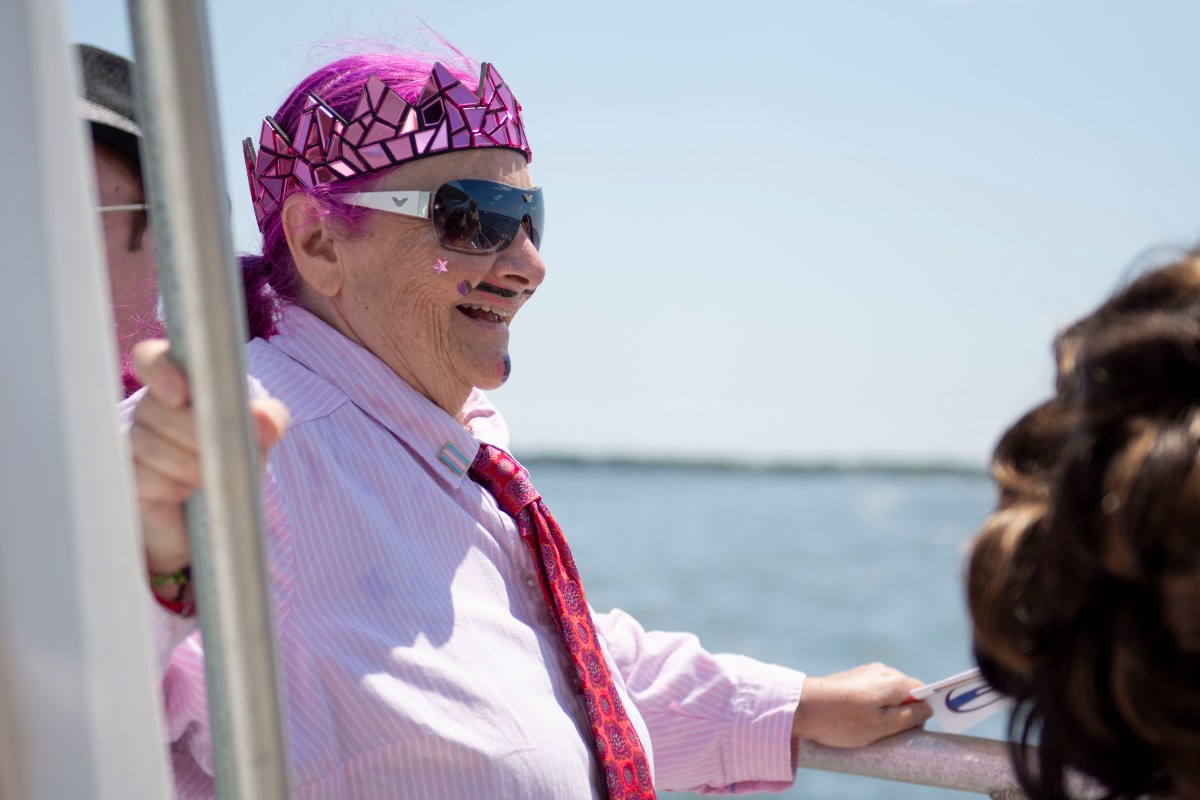
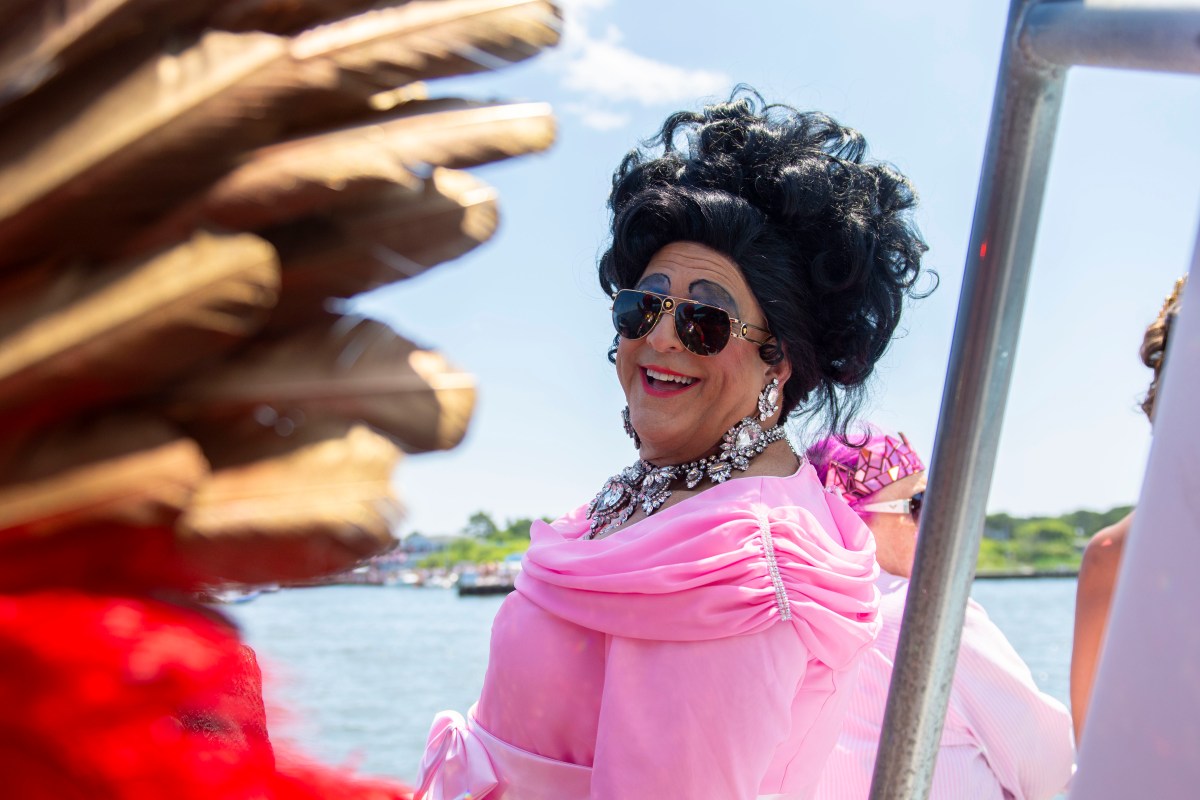
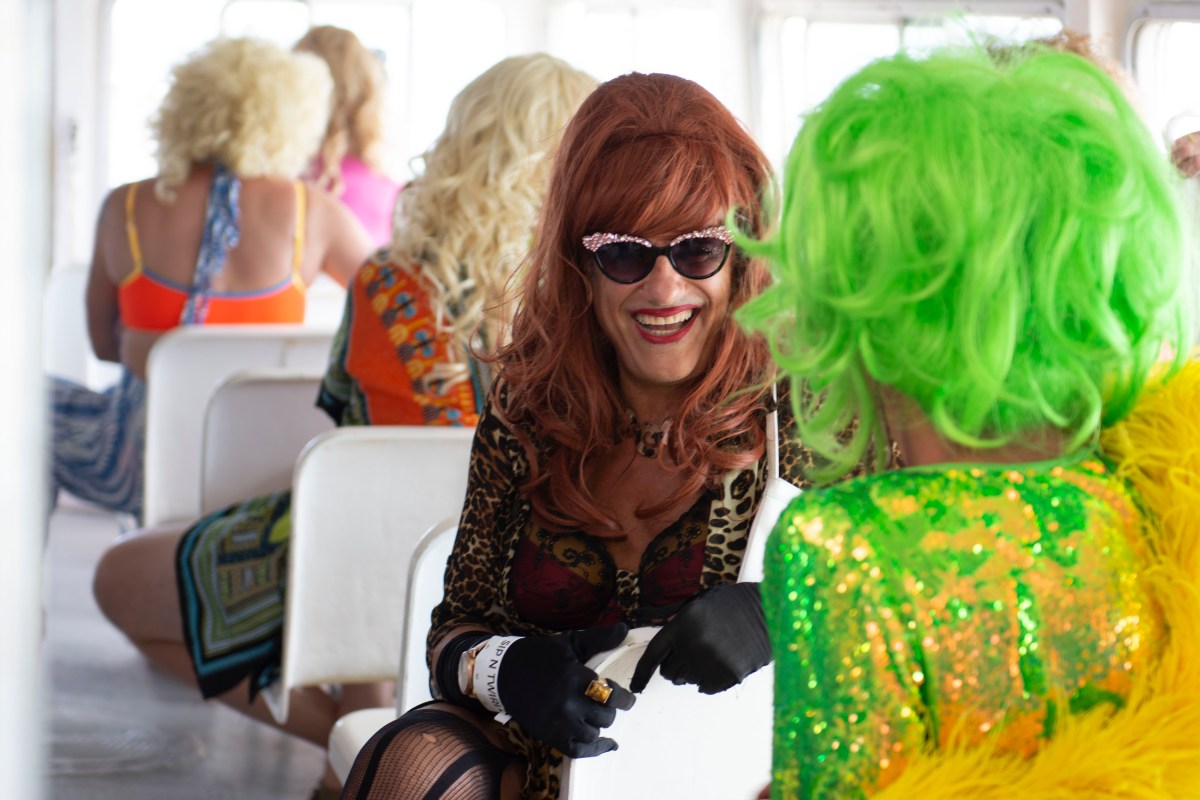
It’s possible that this year, 2025, is the last time the Invasion will take place. When I interviewed Panzi for Phillip Gutman’s photography book Invasion of the Pines last year, she mentioned that many young people who come love it but don’t know why the event happens; still, she said, the point of the event was never to be a classroom, it was to have fun. “[Young people] are creating their own generation,” she said last year. “Just let them have fun.” So in 2025, the plan was to go “out with a bang,” as Panzi wrote in an email this year, unless in the following year someone else takes up the mantle. It felt important to go, to bear witness to this final in the series of great drag protests, this act of resistance embodied as a celebration of color and life and glamour and self-expression. The Invasion was also chronicled recently in another photography book, Fire Island Invasion: Day of Independence by Anderson Zaca, for which Panzi wrote the forward.
While I can only imagine that seeing scads of people in drag parading from a massive ferry onto a dock in the Pines is itself delightful, it’s when these drag denizens start their day in Cherry Grove that I find most divine. At Cherry Grove’s legendary Ice Palace, multigenerational scores of people line what’s usually the dance floor in drag costumes of every kind, from the intricate to the shake-and-go, the ridiculous to the sublime. There’s everything from $10 Party City wigs to opulent, feet-high feather and rhinestone constructions one might otherwise expect to see on a Las Vegas stage. There are puns (“Burned-to-Death Peters”) and a full-blown Mona Lisa behind a red velvet museum rope; a “Busted Brigade” all dressed like the beloved local drag artist of the same name; a “Spirit of 76” group attired like icons from the 1970s, like Rocky and Charlie’s Angels. People mill about chatting, sipping on cocktails, encircling the pool, dancing to the sounds of lauded DJ Ana Matronic. Sashes are given out for the likes of “Best Group” and “Most Political” and “Most Tragic,” among others, all with humor at its core. This is not a day of taking oneself too seriously: We’re here to have fun and be ourselves, and we’re not asking for your permission.
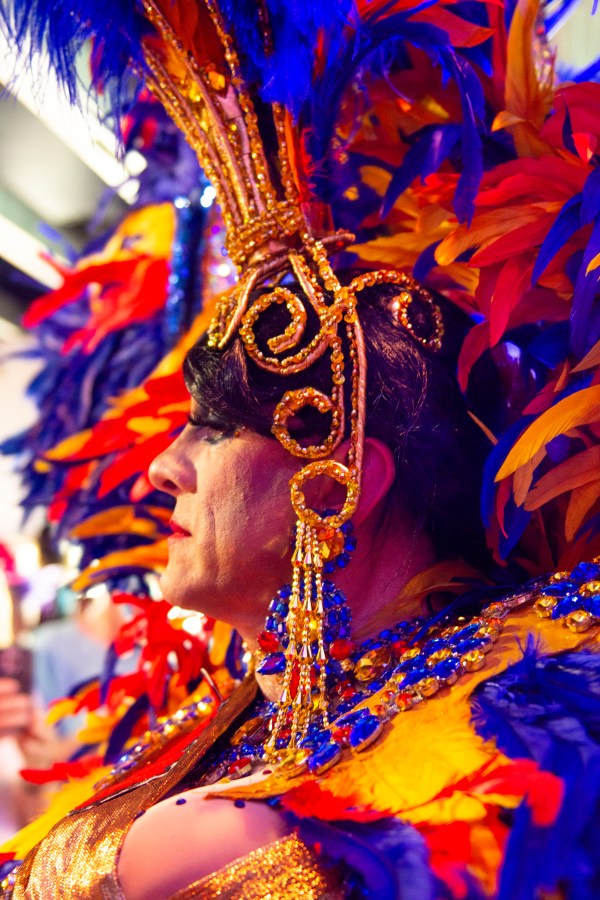

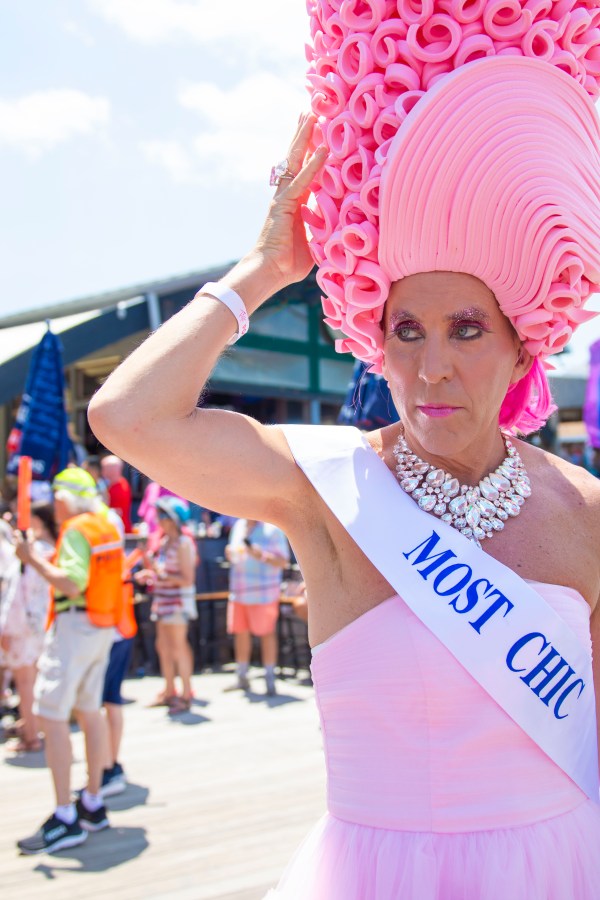
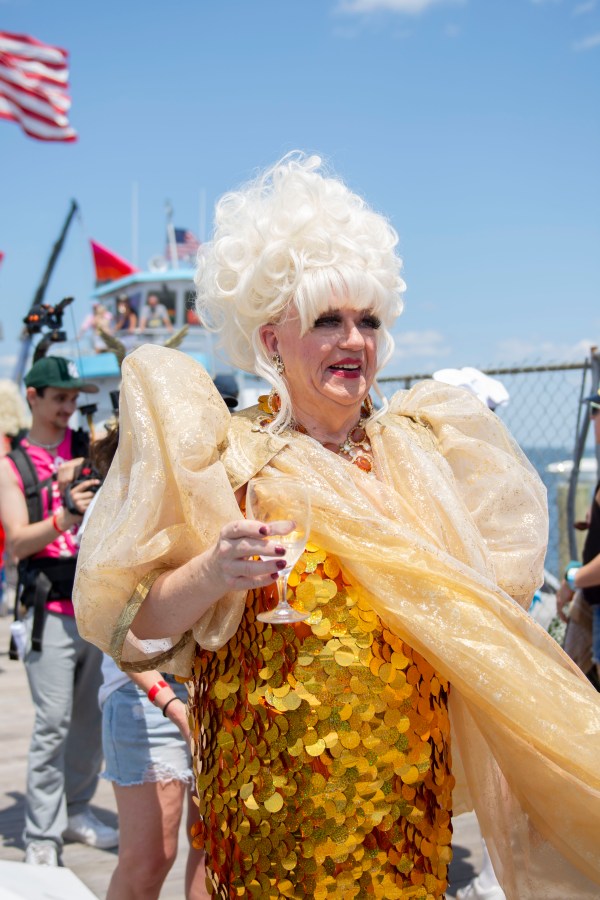
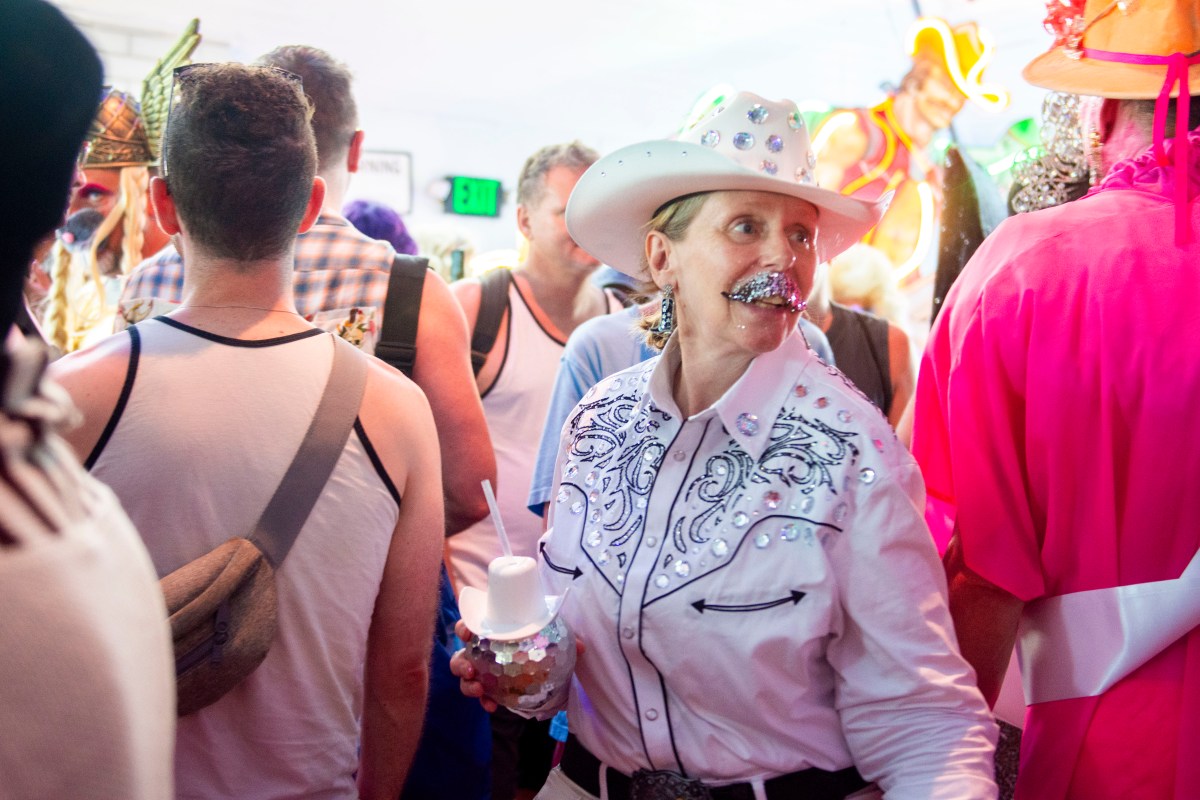
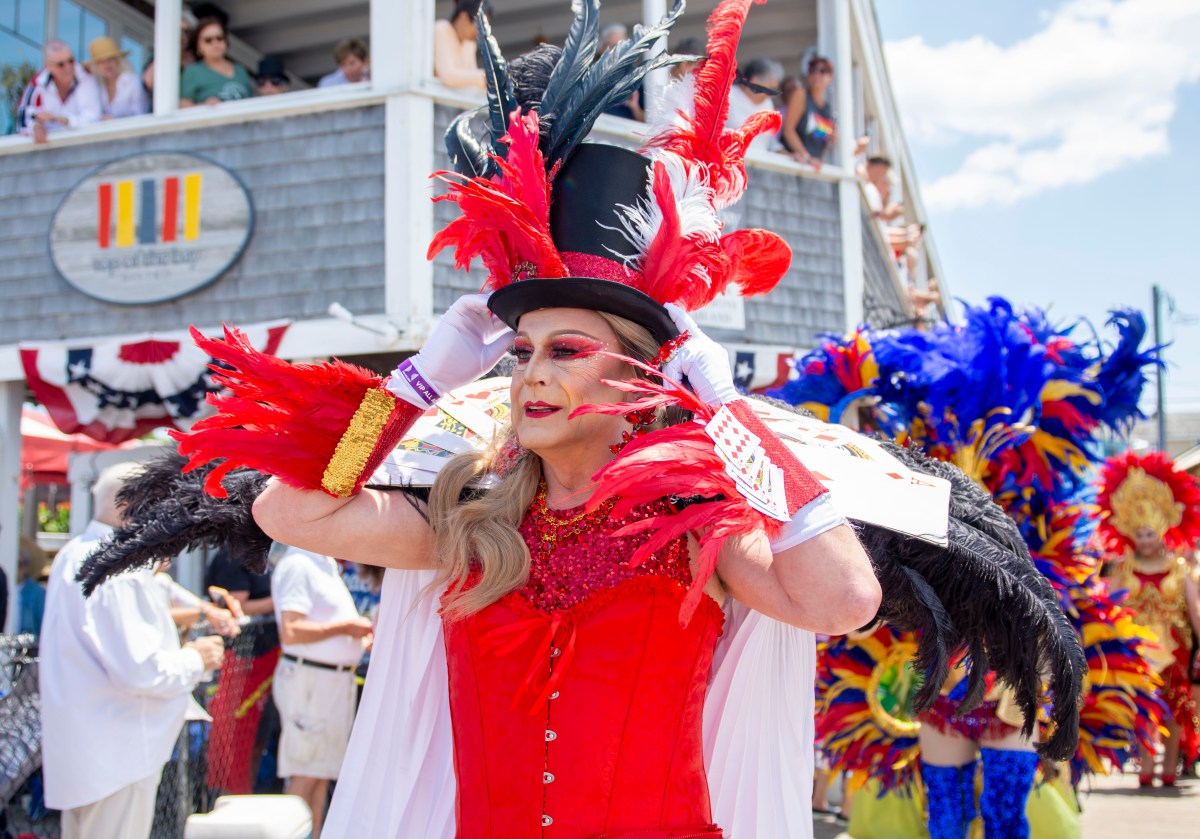
While the ferry to the Pines awaits, crowds have gathered along the path to the dock. They stand, sit on patios, or perch at a restaurant high above with their cameras held aloft, waiting for people to exit the Ice Palace’s long wooden ramp. It’s at once pageantry and parade, the crowd cheering and applauding as each bedragged babe makes their way to the ferry. I snap pictures like a wild woman. People adjust their wigs, smoke cigarettes, wait in line. One of the ferry captains offers me cheese from a charcuterie platter.
Entering the ferry, people duck to make room for their wigs and headdresses and high-standing capes. You’re never too far from a handheld fan or bottle of water or tube of sunscreen. There are friendly reminders to stay hydrated and seek out shade (from the sun) if you need to. On top of the ferry, bodies are nestled together as the sun beams overhead, wigs and sequin leotards are adjusted. At the edge of the dock in Cherry Grove, there’s a giant American flag, a giant trans flag, giant Pride flags.
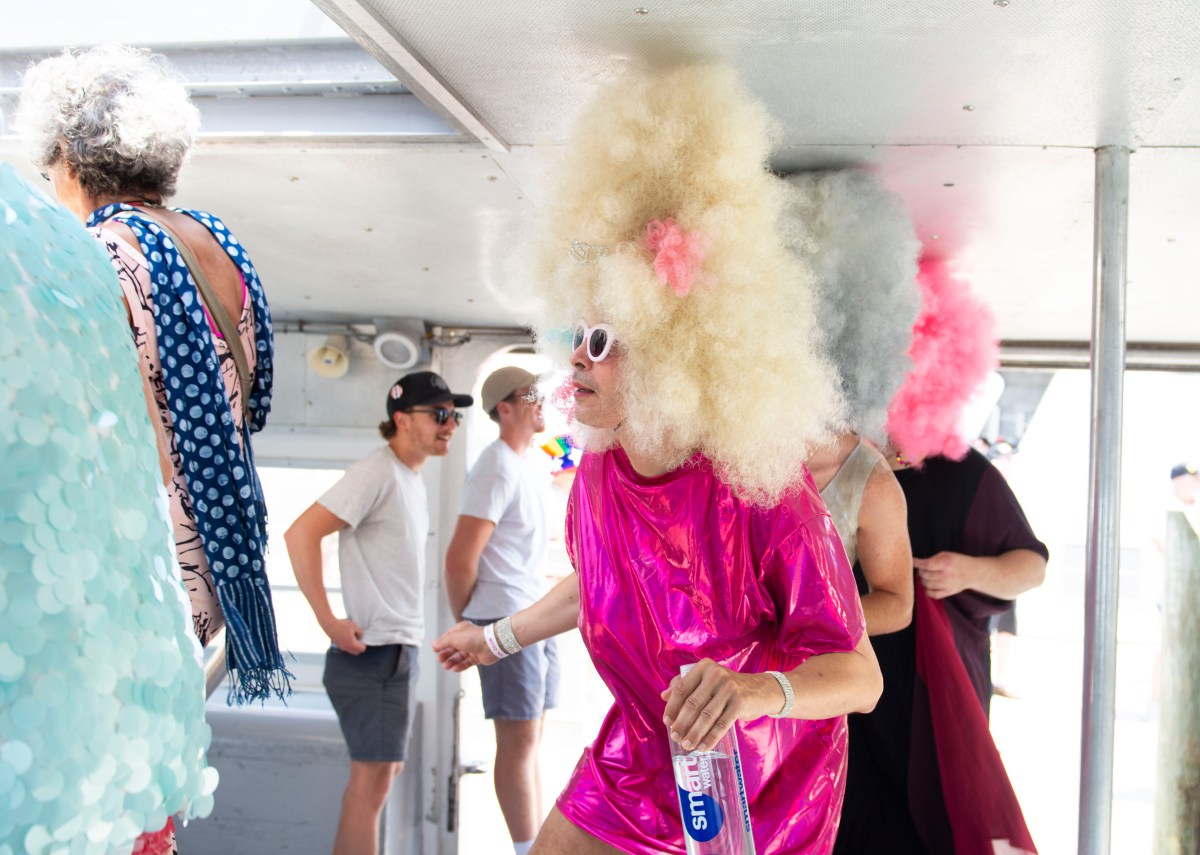
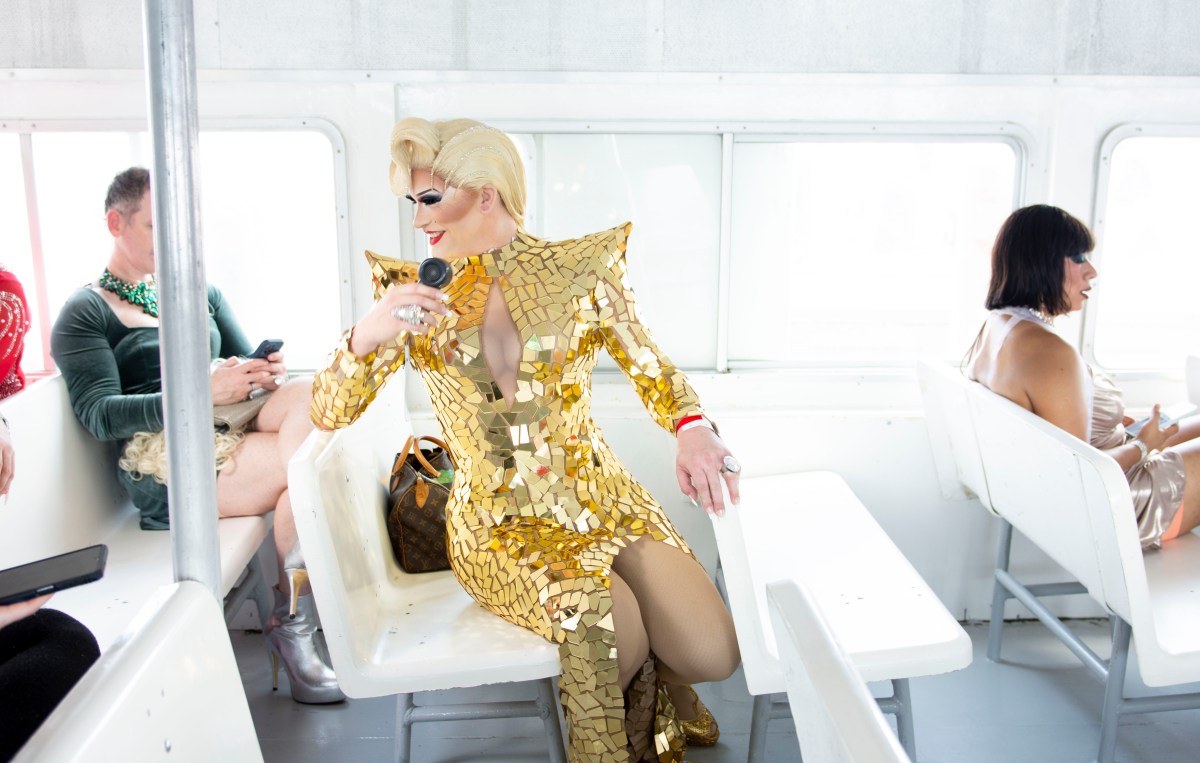
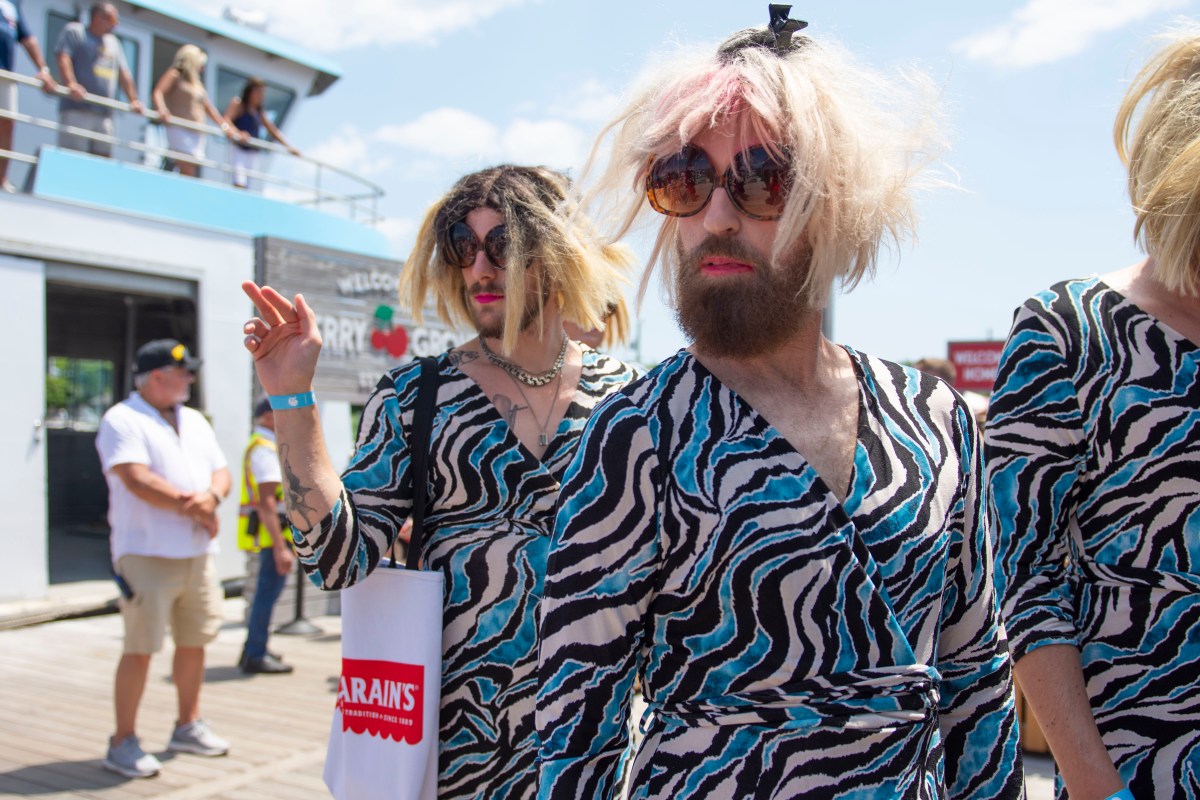
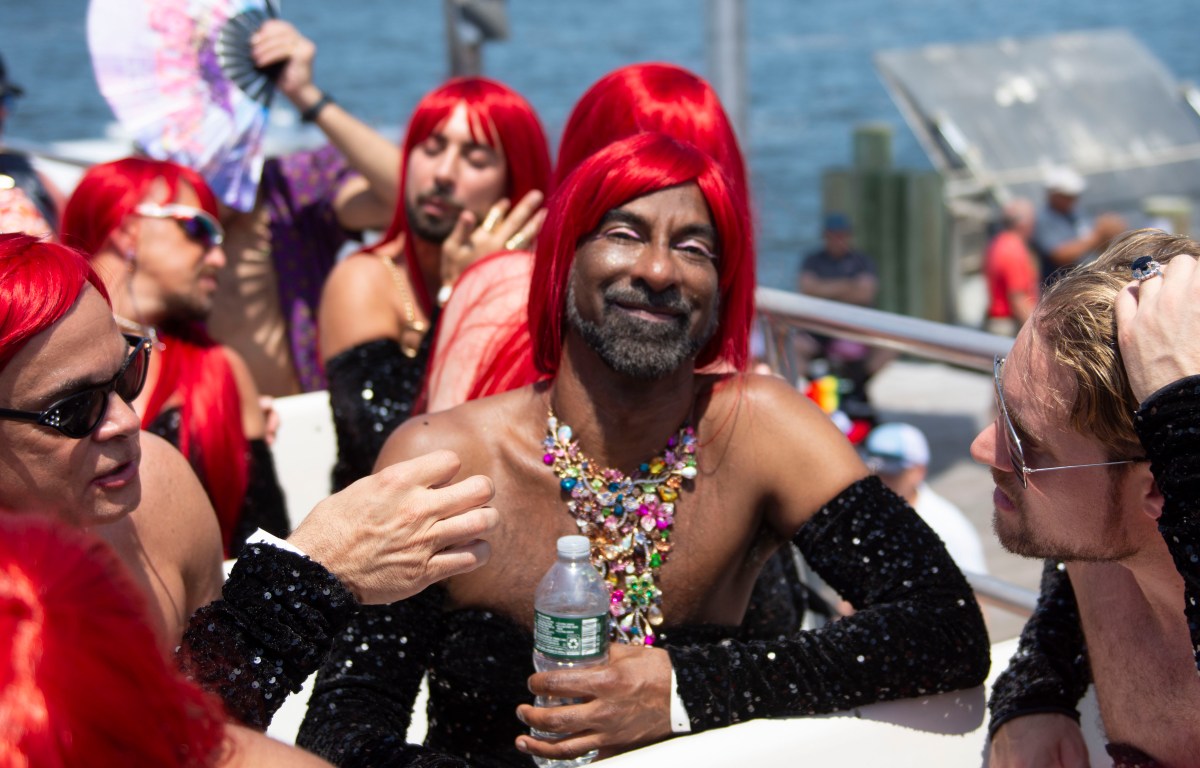
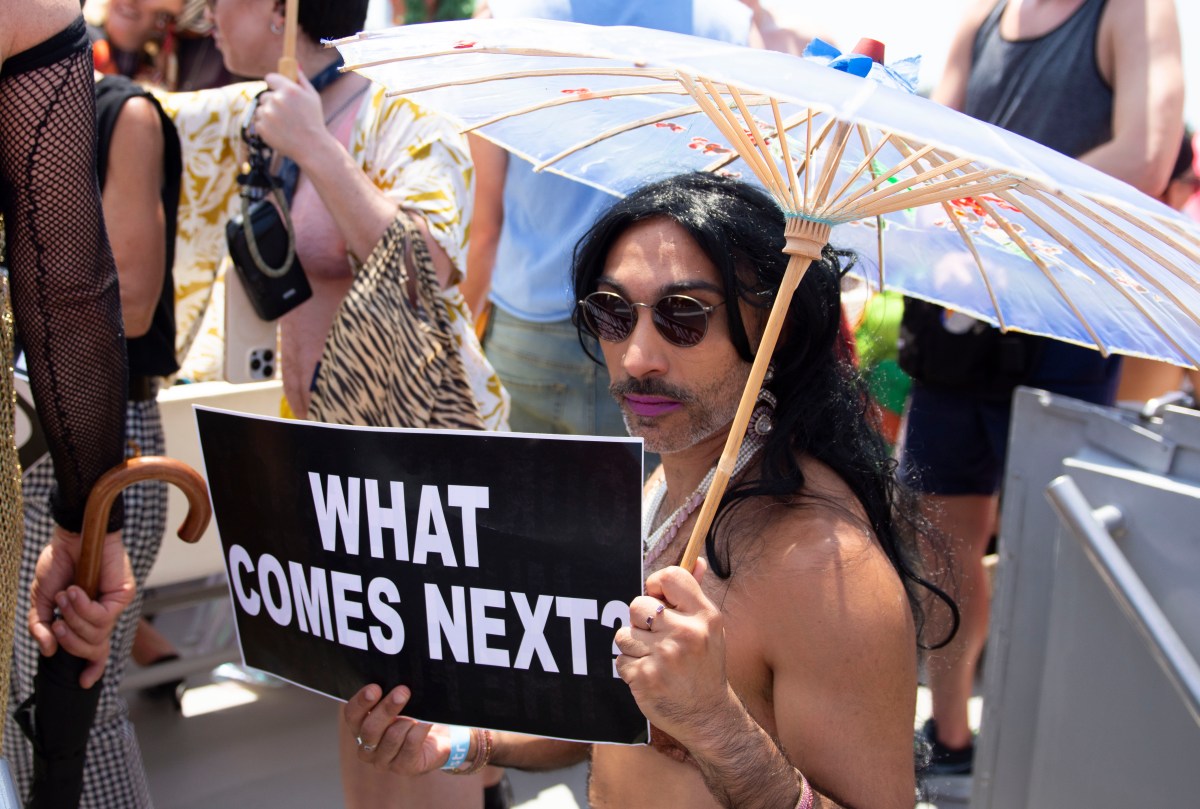

As the ferry full of drag denizens arrives at the dock in the Pines from Cherry Grove, drag artist Lola (attired as Madonna a la Marie Antoinette) and singer Seth Sikes (in a red and blue Speedo) regale the crowd with a rendition of “The Star Spangled Banner.” A collective of dancers will spray confetti into the sky and introduce Panzi, who will later have a ferry named after her, and party upon party of people in drag will exit onto a pink carpet and wave to the crowds. It’s hot, but I barely feel it, snapping away at my camera as each person leaving the ferry smiles a real, true, genuine smile. I am witnessing joy, and this is its power, its triumph over adversity, its reclamation of space, its assertion of positivity. And while I wish I could witness it every year, I’m grateful for the almost 50 that have come before, for Panzi’s work in organizing, for the people who have shown up in drag and to watch.
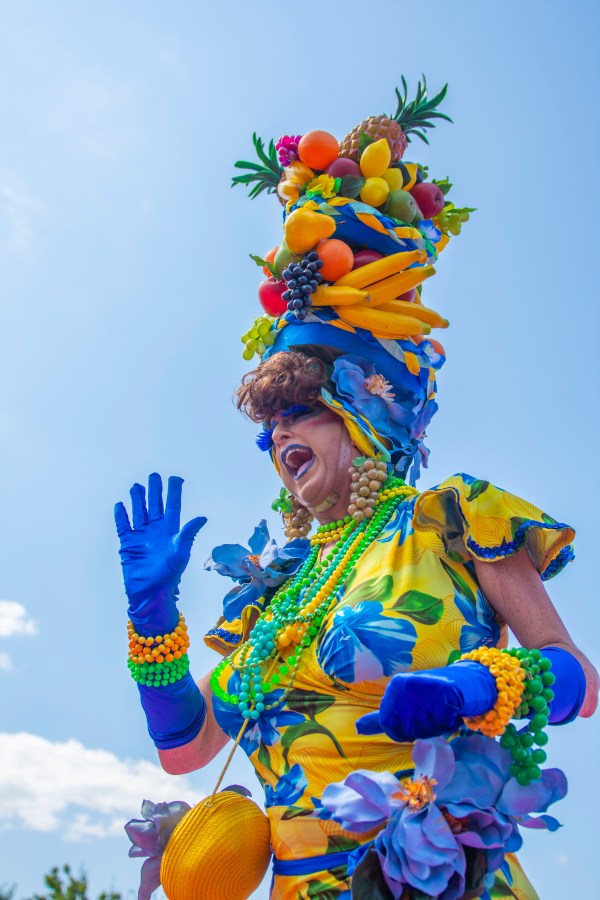
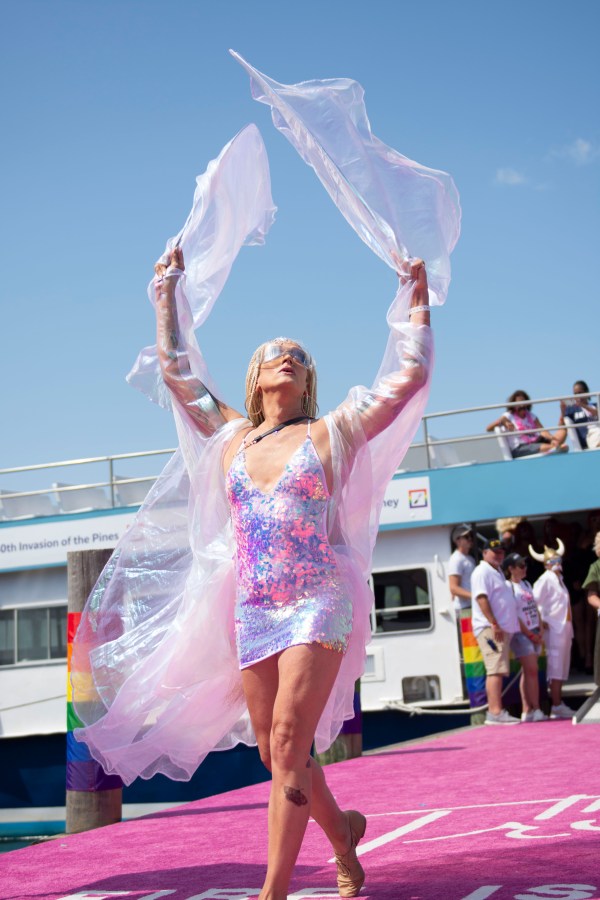
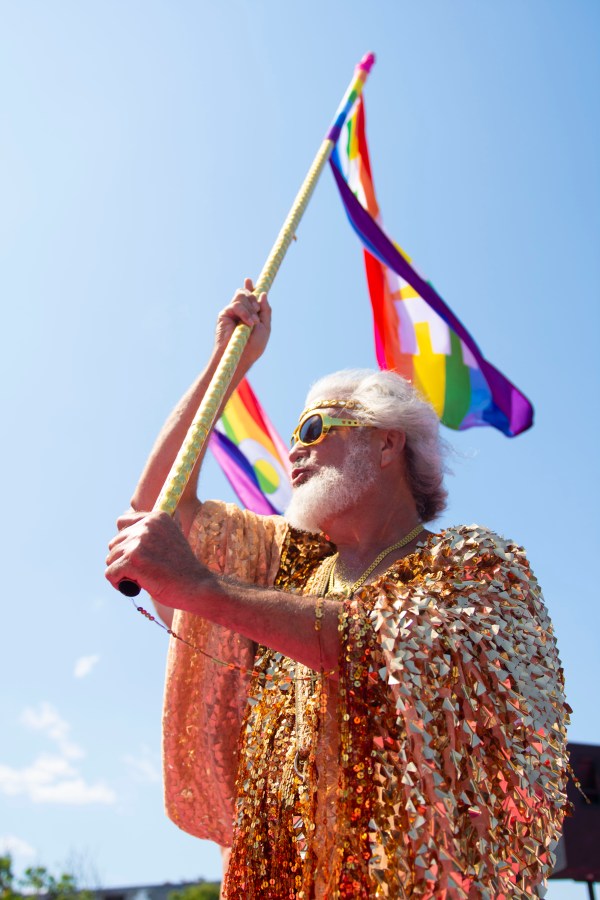
I think of a conversation I had with my uncle recently, where he asked me what I think when I see an American flag pasted on someone’s car or home now. Without pausing I responded, “Republicans.” And what a sad thing to think, that for some the flag would come to represent the blind nationalism, exclusion of others, repression, closed-minded thinking, and conservatism the party has become known for, in addition to the suppression of queer and trans rights and even the suppression of drag.
But that America is not my America. Rather, this is my America, the Invasion of the Pines. It is this America that was founded on protest and freedom of expression, as much in 1976 as 1776, as it dances and glitters in the face of oppression. The Invasion of the Pines is a celebration of what America means to us. It is the only America I am interested in, and if I cannot have a day where freedom is celebrated with wigs and lipstick and mustaches and feathers, then I don’t want it.








Comments
Thank you so much for this piece! I hadn’t heard of this tradition; glorious.
truly gorgeous photos!!!!